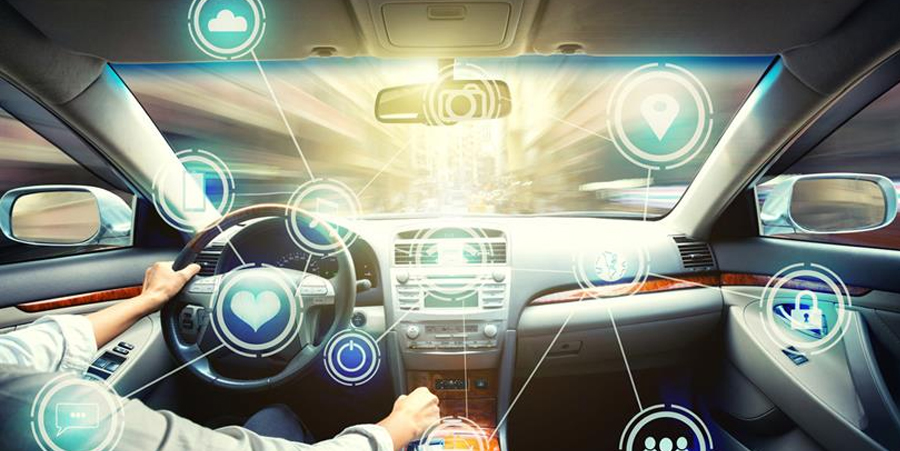Cars are now digital platforms in their own right and offer a rich environment for advertisers.
With news that traffic on the roads has in some cases exceeded pre-pandemic levels, the car has been thrown into the limelight as the key mode of transport for millions up and down the country. Consumers are driving further for leisure and even staycationing more, as Covid concerns have created a jittery foreign travel market.
At the same time, the car market has had a confidence bounce-back from the early days of the pandemic, with consumer demand increasing and a global chip shortage creating price inflation for used cars and increasing waiting lists for new cars.
Cars as digital platforms
Encouraged by strong demand, car manufacturers are releasing new models into line-ups, even though they are struggling to get them off the production line. They have also had to look for ways to respond to the success of Tesla, the share price of which has skyrocketed, leaving a wide array of manufacturers with red faces, given their own slow adoption of technology.
Support for mobile mirroring services has risen as manufacturers have recognised the importance of mobile-phone-based services at the centre of the in-car experience. However, no manufacturer has yet been able to offer mapping that can compete with Google or Apple. Both tech giants are starting to accelerate their in-car offerings in what can be seen as a drawing of battle lines in the ever-increasing war for our attention. Amazon’s Alexa is also playing a role, with Ford adding the smart assistant as a hands-free option in an over-the-air update.
Emerging advertising opportunities
As cars start to benefit from connected services and direct internet connections, it comes as no surprise that advertising opportunities are increasing. Advertisers can already drive visibility on Google Maps and Waze through programmatic offerings. Waze already offers four ad formats in which to intercept journeys and drive up the prominence of bricks-and-mortar destinations. Given that the car is such a vital method of transport for retail, you can see why so many advertisers are already investing here, especially destination-driven businesses.
The future in this space is potentially fragmented as car manufacturers are likely to get in on the party. Companies such as Telenav are already offering OEM advertising systems to auto manufacturers and it is only a matter of time before the value of advertising revenue is fully recognised. This would mirror the step that TV manufacturers have taken in the development of offerings such as Samsung TV and Samba TV.
With more self-driving and driving-assistant options due to become the norm, the focus is set to shift to cars as entertainment platforms. Competition is rife, with in-car screens getting bigger and Netflix becoming available as in-car entertainment. Mercedes also recently debuted its in-car infotainment hyper screen. There is a strong likelihood that contextually relevant advertising will not just come from in-car software and navigation apps, but also from entertainment platforms tapping into in-car consumption.
Forget ecommerce, think in-car commerce
A newer, exciting development in cars is connected commerce, with in-car payments being trialled and launched by auto manufacturers. Hyundai is one such company, bringing in-car payments to its all-new Ioniq 5. Hyundai is betting on the technology as a way to drive incremental revenue and sees fast food and charging occasions as key opportunities. When the technology arrives in the US in 2021, it will include partners such as Domino’s, ParkWhiz and Charge hub.
The potential for such technology is clear and will ultimately represent an opportunity for retailers to provide seamless services and remove barriers to purchase. Consumers could potentially order their favourite pizza as they drive home or even pay before arriving at a drive-through. Coffees could be paid for just before collection. The potential for frictionless commerce is clear.
What should advertisers do now?
The connected in-car experience offers advertisers one of a few ways to tap into spatial context. Retailers, especially bricks-and-mortar ones, should optimise their digital presence to ensure they are accessible on digital platforms and then supplement this by testing in-car navigation opportunities to further increase visibility.
In-car audio opportunities are a way that advertisers can intercept consumers today. DAX, Spotify and Acast are an easy win. Campaigns can be customised fully to the environment, using dynamic audio technology.
Fully expect to see in-car purchase technology accelerate quickly. Brands should look to drive integrated partnerships to unlock enhanced consumer experiences as the technology develops, rather than waiting and being left behind.
…
This article first appeared in www.campaignlive.com
Seeking to build and grow your brand using the force of consumer insight, strategic foresight, creative disruption and technology prowess? Talk to us at +971 50 6254340 or mail: engage@groupisd.com or visit www.groupisd.com/story




